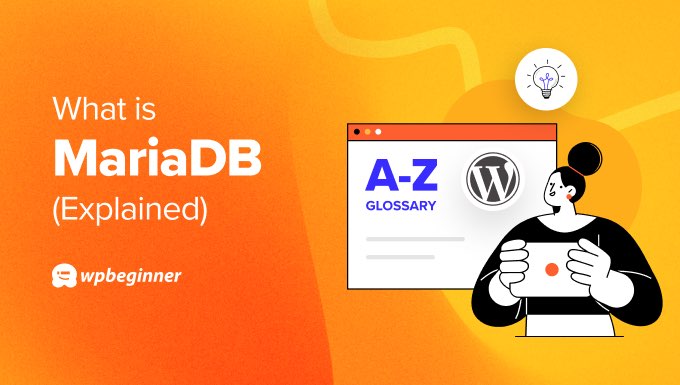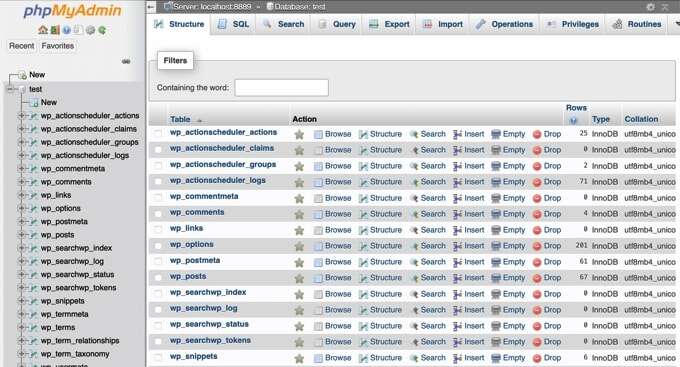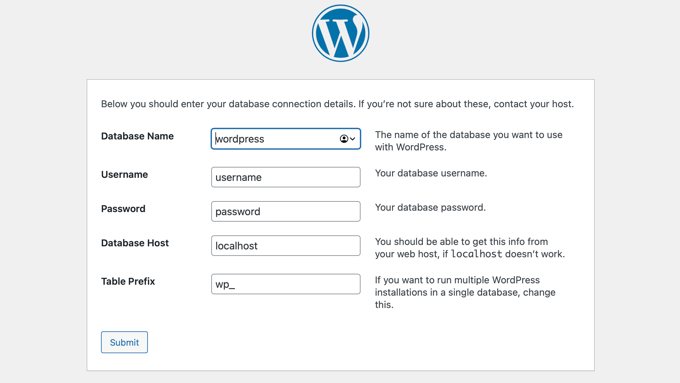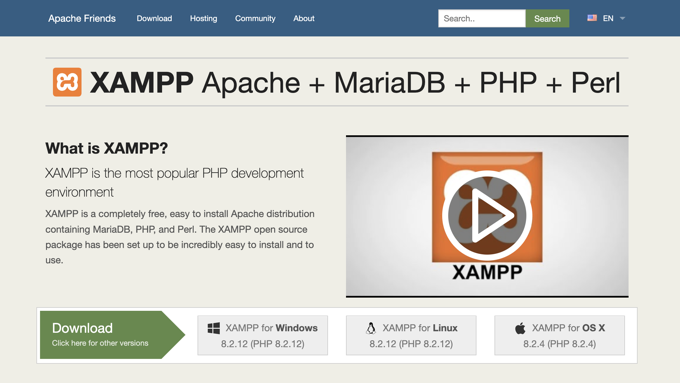MariaDB is one of the database management systems that WordPress can use to store and retrieve your blog information. It is an alternative to the popular MySQL database application.
WordPress uses a database as a filing cabinet for your website. It contains your posts and pages, comments, many settings, and much more.
You can use WordPress without knowing how the database works behind the scenes, but having a basic understanding is helpful when troubleshooting problems with your WordPress site.

What Is a Database?
MariaDB is a relational database management system that runs on your WordPress hosting server and handles multiple users and databases. This means that it acts as a digital filing cabinet that organizes and stores your website data in different tables.
It works the same way as MySQL and is fully compatible with WordPress, so you can use either database application with WordPress. Typically, the choice of database software is made by your WordPress hosting provider.
Both applications use a programming language called SQL, or Structured Query Language. Pronounced ‘sequel’, it is used to retrieve, add, and delete information from the database tables.
A SQL instruction to retrieve data is known as a query, and it typically looks something like this:
SELECT * FROM wp_posts WHERE ID = 23;
You don’t need to have coding skills or database knowledge to use WordPress. All of this happens automatically behind the scenes.
But with some basic knowledge of SQL, more advanced users can fix many WordPress errors by working directly with the database, such as:
This is especially helpful when you’re unable to log in to the WordPress admin area. In that case, you can gain direct access to your WordPress database using phpMyAdmin.
This is a web application you will find in your web hosting provider’s control panel. You can use it to manage your WordPress database from your web browser.

You can learn more about databases and how to use them in our beginner’s guide on WordPress database management with phpMyAdmin.
What Is the Difference Between MySQL and MariaDB?
The MySQL database application has a long history. It was first released in 1995 and quickly gained traction as a fast, efficient, affordable database management application.
When WordPress was launched in 2003, it chose MySQL to manage its database.
It is currently owned by Oracle Corporation. It is open-source software licensed under the GPL and is available free of charge.
When MySQL was acquired by Oracle in 2009, a community of developers created a fork of the software. They called this new open-source project MariaDB.
With MariaDB, they could continue working on the database independently of Oracle while Oracle oversaw the ongoing development of MySQL.
Since then, new features have been added to MariaDB that are not in MySQL, and the team has improved its performance. However, it remains completely compatible with MySQL.
We switched this blog to MariaDB in 2019 to take advantage of the performance benefits and speed up the WPBeginner website.
How Does WordPress Use Its Database?
Most of your WordPress data is stored in database tables. This includes posts, pages, comments, categories, tags, custom fields, users, and other WordPress settings.
You might remember providing information to set up the database when you first installed WordPress. You were asked to provide a database name, host, username, and password.

This information about the WordPress database is stored in the wp-config.php configuration file.
WordPress used the information you provided to create database tables and then created the default installation data inside those tables.
There are 12 database tables created with a default WordPress installation:
wp_commentmetacontains meta information about comments.wp_commentscontains comments and the comment author’s details.wp_linksmanages blogrolls created by earlier versions of WordPress.wp_optionscontains most of the site-wide WordPress settings.wp_postmetacontains meta information about posts, pages, and custom post types.wp_postscontains your posts, pages, custom post types, and revisions.wp_termmetacontains metadata for terms under custom taxonomies.wp_termscontains terms under taxonomies, such as each category and tag.wp_term_relationshipsmanages the relationships between post types and terms.wp_term_taxonomydefines taxonomies to differentiate between categories and tags.wp_usermetacontains meta information about registered users.wp_userscontains user information including usernames and passwords.
You will notice that each table starts with the prefix wp_. We recommend you choose a different prefix during the WordPress installation to improve the security of your website.
Now, because your important WordPress content is stored in the database, it needs to be backed up regularly, along with the files stored in your media library, themes, and plugins.
Backup plugins like Duplicator automatically back up your files and database tables and store them safely in a remote location. We recommend you follow our guide on how to back up your WordPress site.
Running MariaDB on Your Computer
If you want to run WordPress locally on your computer, then it needs to run the software WordPress relies on. This includes a database management application like MariaDB or MySQL as well as web server software like Apache and the PHP programming language.
It is difficult to set up all of those applications separately, so solutions have been developed to easily install WordPress on Windows and Mac.
One of these solutions uses MariaDB, and that is XAMPP.

XAMPP runs on Windows, Mac, and Linux, and you can learn to install it by following our guide on how to create a local WordPress site using XAMPP.
We hope this article helped you learn more about MariaDB in WordPress. You may also want to see our Additional Reading list below for related articles on useful WordPress tips, tricks, and ideas.
If you liked this article, then please subscribe to our YouTube Channel for WordPress video tutorials. You can also find us on Twitter and Facebook.
Additional Reading
- phpMyAdmin
- Query
- 63 Most Common WordPress Errors and How to Fix Them
- How to Change the WordPress Admin Email (3 Methods)
- Beginner’s Guide to WordPress Database Management With phpMyAdmin
- MySQL
- Database
- How WordPress Actually Works Behind the Scenes (Infographic)
- How to Create a Local WordPress Site Using XAMPP
- How to Reset a WordPress Password from phpMyAdmin




